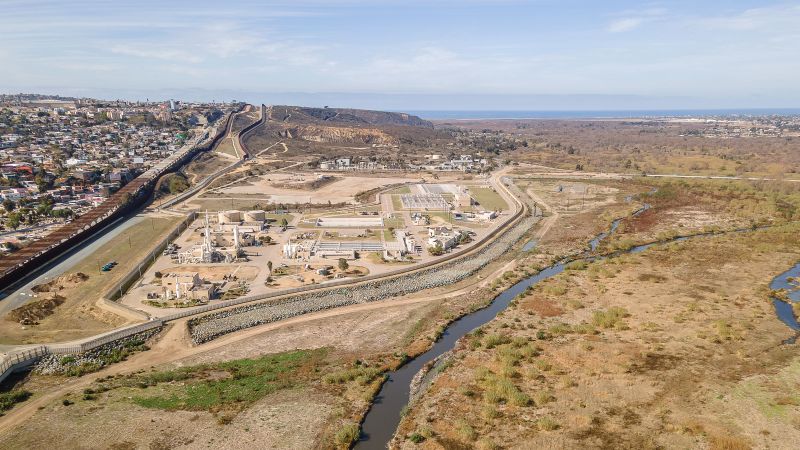Mexico City
—
The governments of Mexico and the United States signed a memorandum of understanding on Thursday to fund and expedite several wastewater treatment projects in the Tijuana River basin.
Untreated wastewater continually affects residents living along the river, which flows across the border from Tijuana and through several of San Diego’s southern neighborhoods. Residents living along the river have long battled severe health issues which researchers say stem from the river’s contamination.
One research team based at the University of California San Diego found that trace amounts of waterborne chemicals from tires, personal care products, and even illicit drugs present in the Tijuana River are being introduced into the air — exacerbating health concerns for tens of thousands of residents living on its banks.
In Thursday’s event celebrated in Mexico City, US Environmental Protection Agency Secretary Lee Zeldin and Mexico’s Secretary of the Environment and National Resources of Mexico Alicia Bárcena agreed to a series of actions to be taken by both governments by 2027 to address the deteriorating wastewater treatment crisis.
The agreement stipulates that both Mexico and the US will re-commit to funding the construction and renovation of water treatment infrastructure on both sides of the border. The document also accelerates several projects to be completed over the next two years.
“What we are doing, in reality, is trying to resolve once and for all the problem of wastewater from the Tijuana River,” Bárcena said during her speech on Thursday.
Zeldin concurred, saying the agreement represented “a huge win for millions of Americans and Mexicans.” He attributed the success to President Trump’s distinct interest in the issue and noted that addressing the water contamination crisis will ensure a safer environment for residents and Navy SEALS training on nearby beaches.

Former Commissioner of the International Water and Boundary Commission (IBWC) Maria-Elena Giner called the agreement “excellent news” toward reaffirming commitments made by the US and Mexican officials in Minute 328, which outlines how Mexico and the US will share the costs of operating and maintaining water treatment infrastructure on the border.
Permanent and continued diplomacy, transparency of information, and defined concrete action with Mexico will be needed.
Former IBWC Commissioner Maria-Elena Giner
Funding wastewater treatment facilities and their continued operation has posed a constant challenge; this agreement sets expectations for construction and rehabilitation projects that haven’t yet been financed. But given that Bárcena’s and Mexican President Claudia Sheinbaum’s Morena party currently controls the country’s legislature, it is likely the funds could be allocated in the 2026 and 2027 budgets.
At the Mexican President’s daily press briefing on Friday, Bárcena noted that she is working to secure an agreement where the US and Mexico each cover half the costs of upgrading the critical San Antonio de los Buenos treatment plant, located southwest of Tijuana. She estimates the improvements for this project alone will cost $67 million or 1.2 billion pesos.

